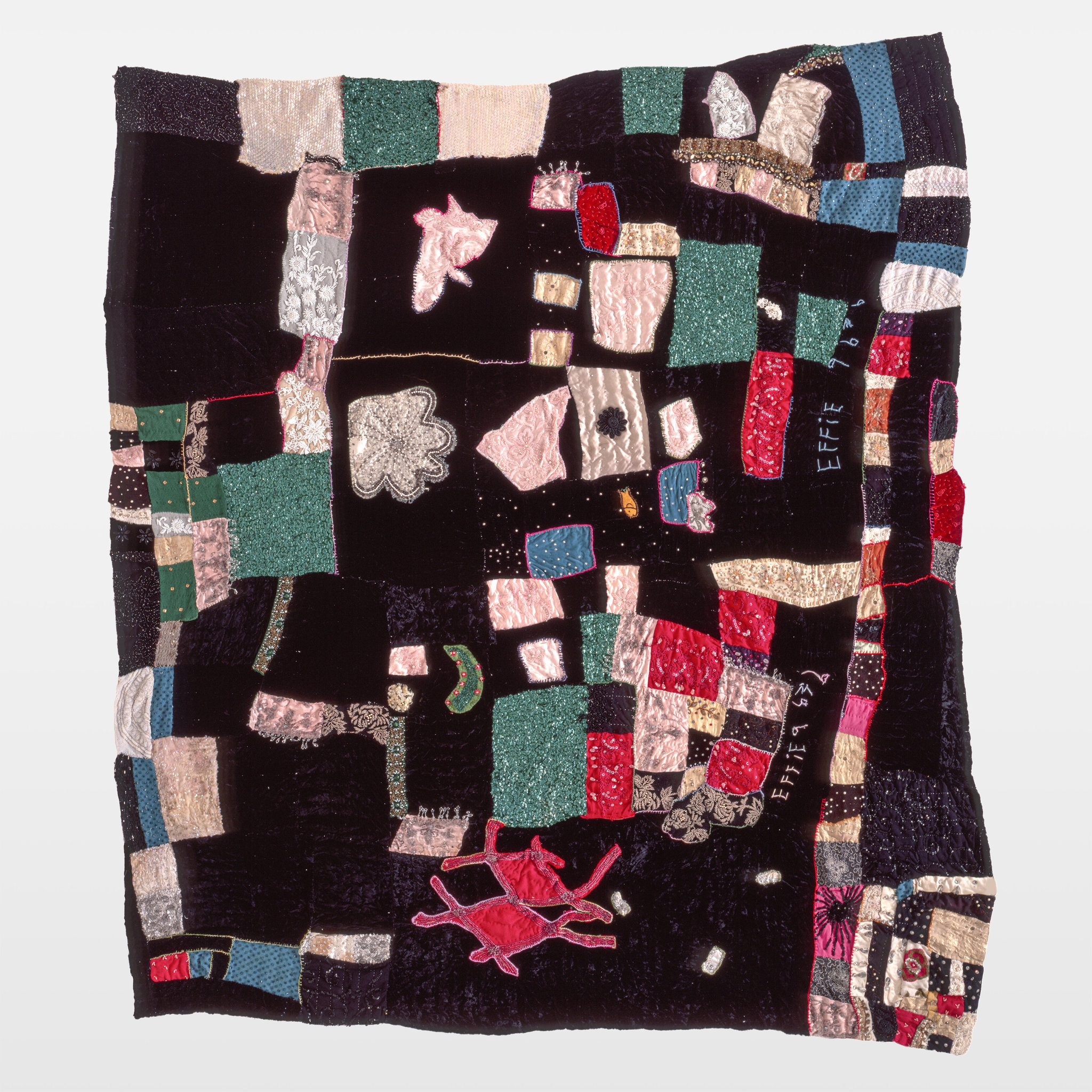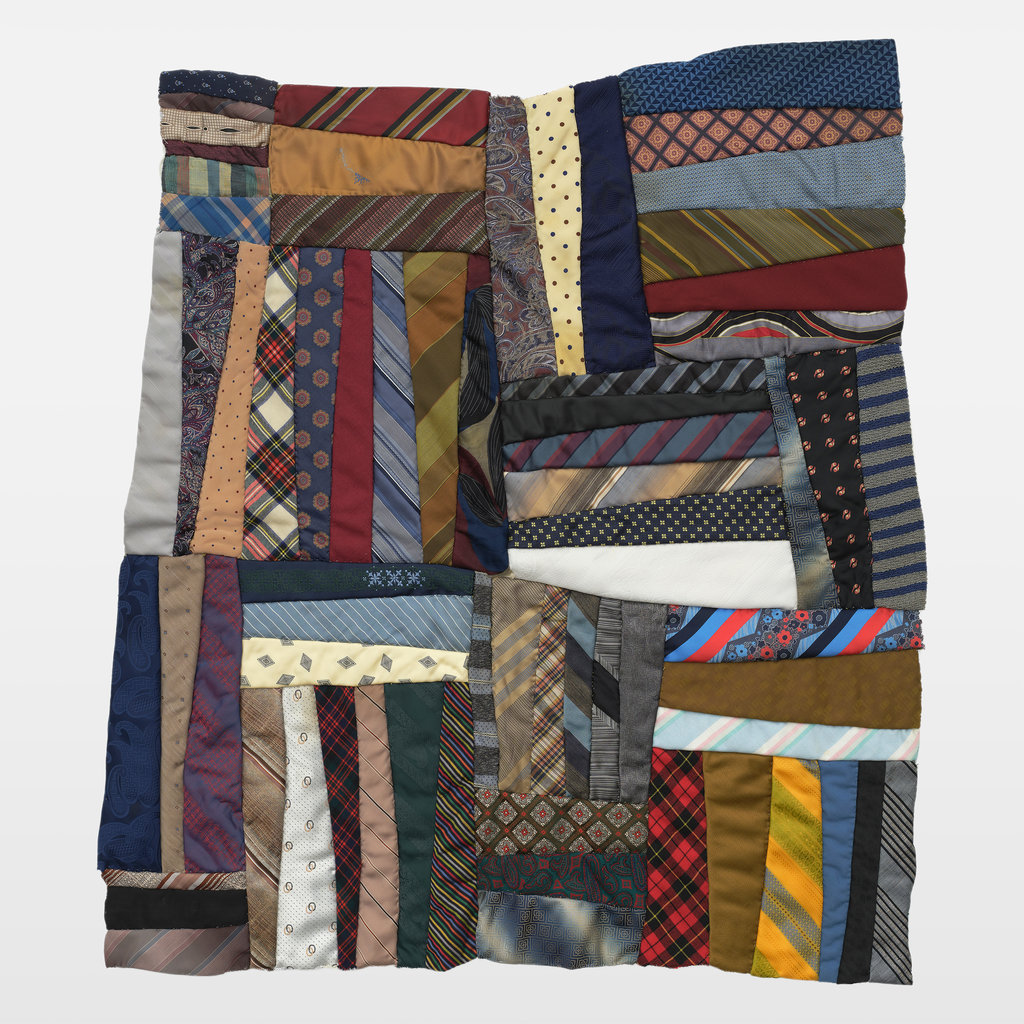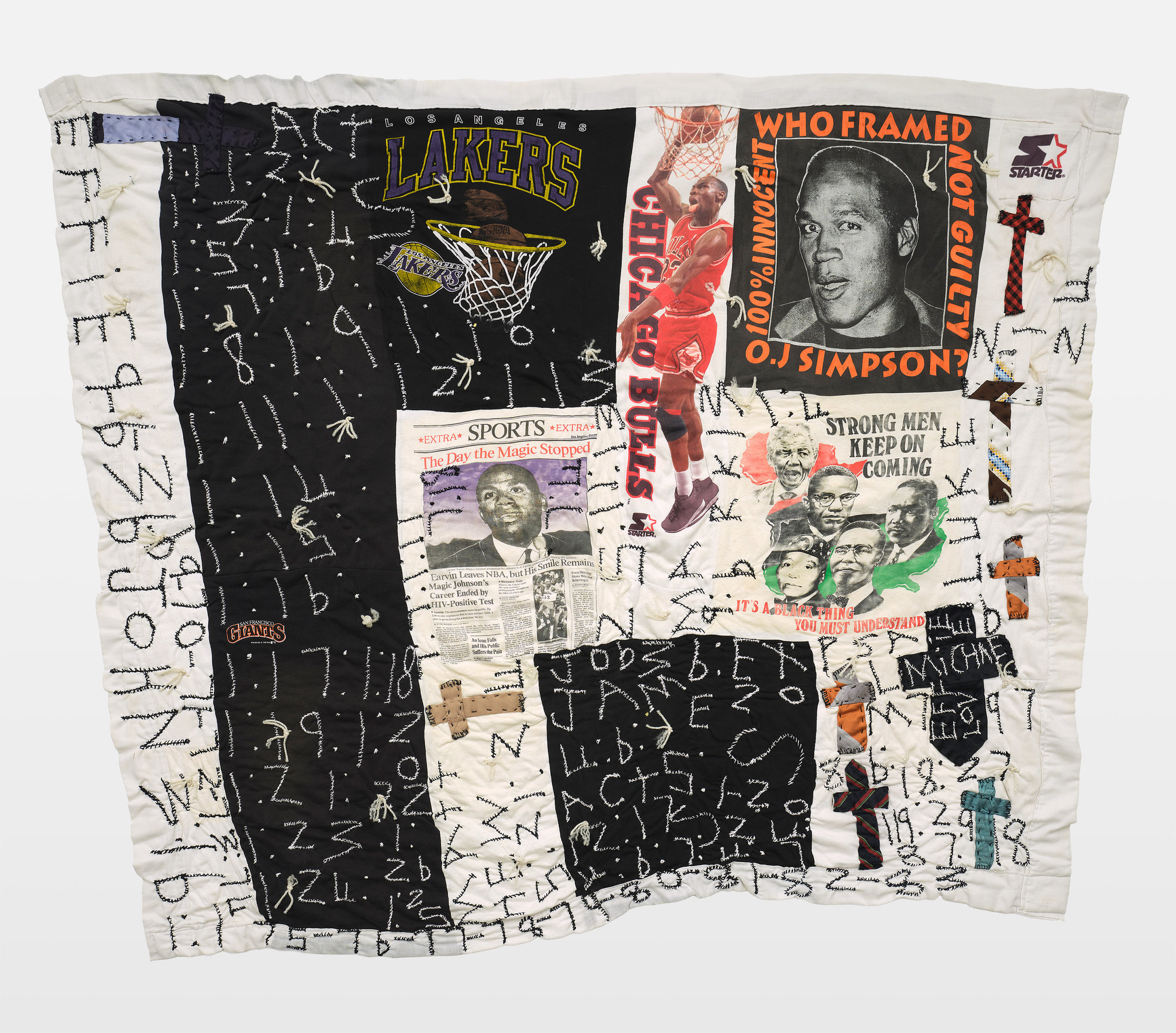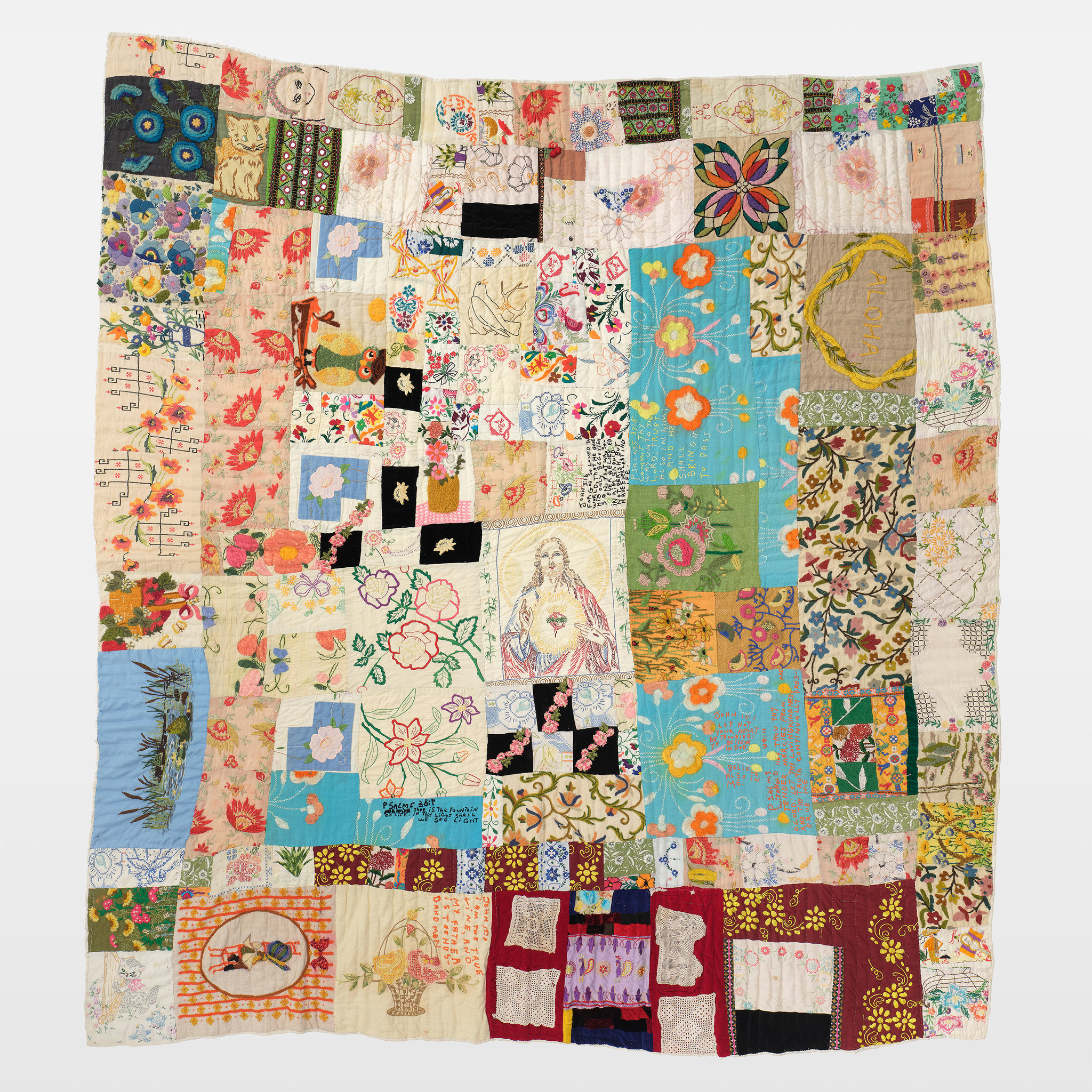“I think it’s because I love them so much that God let me see all these different colors,” Tompkins once said of her patchworks. “I hope they spread a lot of love.”

Rosie Lee Tompkins Article by Roberta Smith https://www.nytimes.com/interactive/2020/06/26/arts/design/rosie-lee-tompkins-quilts.html
 1996 quilt by RLT
1996 quilt by RLT
Tompkins began by cutting her squares (or triangles or bars) freehand, never measuring or using a template, and intuitively changed the colors, shapes and size of her fabric fragments, making her compositions seem to expand or contract. As a result her quilts could be deliriously akimbo, imbued with a mesmerizing pull of differences and inconsistencies that communicates impassioned attention and care.
She studied nursing, and for the next two decades or so worked in convalescent homes, a job she is said to have loved.
!!! A god-loving, quilt-making nurse. Brings a point of connection to my reverence for nursing and those who dedicate their lives to becoming professional helpers. Eventually she earned enough from quilting to quit her nursing job.
The flea markets were a quilter’s paradise in the 1970s, ’80s and beyond, places where the necessary materials were plentiful and cheap: printed, embroidered and sequined fabrics, beaded trim, crocheted doilies, needlepoint, buttons, secondhand clothing, costume jewelry — all of which, and more, Tompkins incorporated into her art.


The quilter felt she was an instrument of God and saw her work as an expression of her faith and his designs. “If people like my work,” she once told Eli, “that means the love of Jesus Christ is still shining through what I’m doing.”

But the “self-taught” or “outsider” labels were inaccurate for quilters. Effie Mae Martin had grown up as her mother’s apprentice in a kind of atelier: a small town full of female friends and relatives who quilted, the older ones showing and telling the younger ones how it was done. More and more I saw her as a great American artist, no qualifier needed.
She reminded me of George Ohr, the unparalleled turn-of-the-century potter from Biloxi, Miss., whose work was rediscovered in the early 1970s. Ohr’s precariously thin-walled vessels, unlikely shapes and inspired glazing shared a kind of bravura with Tompkins’s works. They both possessed an extraordinary skill and idiosyncratic abandon that creates a new sense of the possibilities of the hand, visual wit and beauty in any medium.

